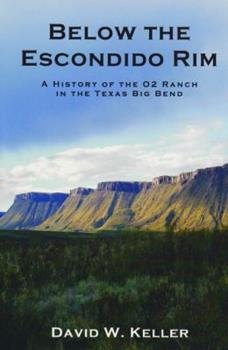In the Shadow of the Chinatis: A History of Pinto Canyon in the Big Bend
There is a deep and abiding connection between humans and the land in Pinto Canyon—a remote and rugged place near the border with Mexico in the Texas Big Bend. In the Shadow of the Chinatis reveals a rich tapestry of interaction between humans and their environment, providing a unique examination of the Big Bend region and the people who call it home.
Winner, 2020 Al Lowman Memorial Prize for Best Book on Texas County or Local History
Below The Escondido Rim: A History of the O2 Ranch in the Texas Big Bend
Below the Escondido Rim details the evolution of a legendary Texas cattle ranch and the historic background in which it evolved. It is a story about dreams as big as the land itself, of hardship and success and failure, of long days in the saddle beneath a relentless sun, of booms and busts, boondoggles and burnouts, overextension and recoil. It is a story about trying to overcome adversity in an incredibly vast but difficult land.
"Though his book is an academic work, Keller's attention to prose and style is evident... his portrayal of the families who lived there is touched with such care and heart, the reader only wants to see them succeed. Warning: The reader will be disappointed."—Texas Observer on In the Shadow of the Chinati’s
Alpine
Alpine was born a railroad town, but long before the whistle of the steam locomotive broke the silence of Alpine Valley, the nearby spring was a favored campground for prehistoric nomads and later for Spanish explorers and freighters along the Chihuahua Trail. When the Southern Pacific unfurled its line down from Paisano Pass in 1882, landowner Thomas Murphy saw opportunity and platted the town. In 1887, Alpine was chosen as the county seat, and with the opening of Sul Ross Normal College in 1920, the town became the academic hub of the region. Following a decade of prosperity, the Great Depression and recurrent droughts triggered a slow decline. But since the early 1990s, Alpine has enjoyed a surge in regional art and culture, allowing it to reclaim its former glory as a proud little cosmopolitan cowtown perched at the top of the Texas Big Bend.



